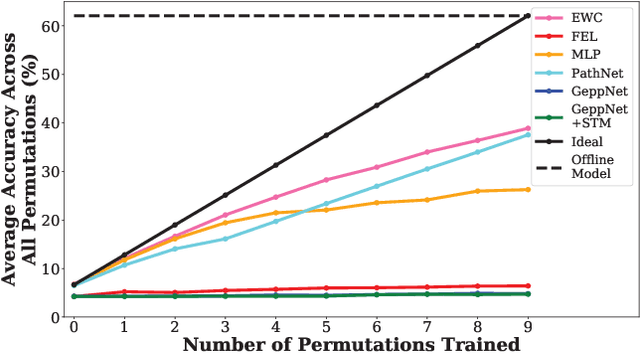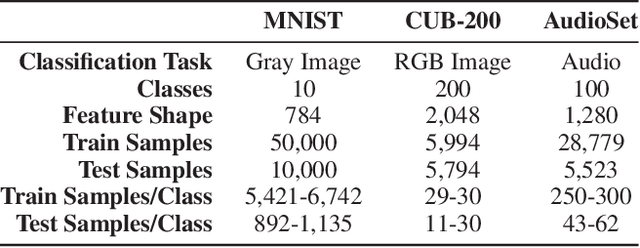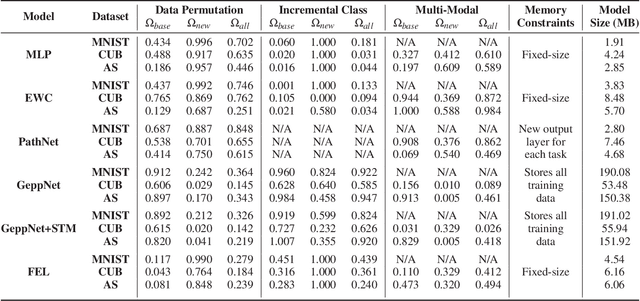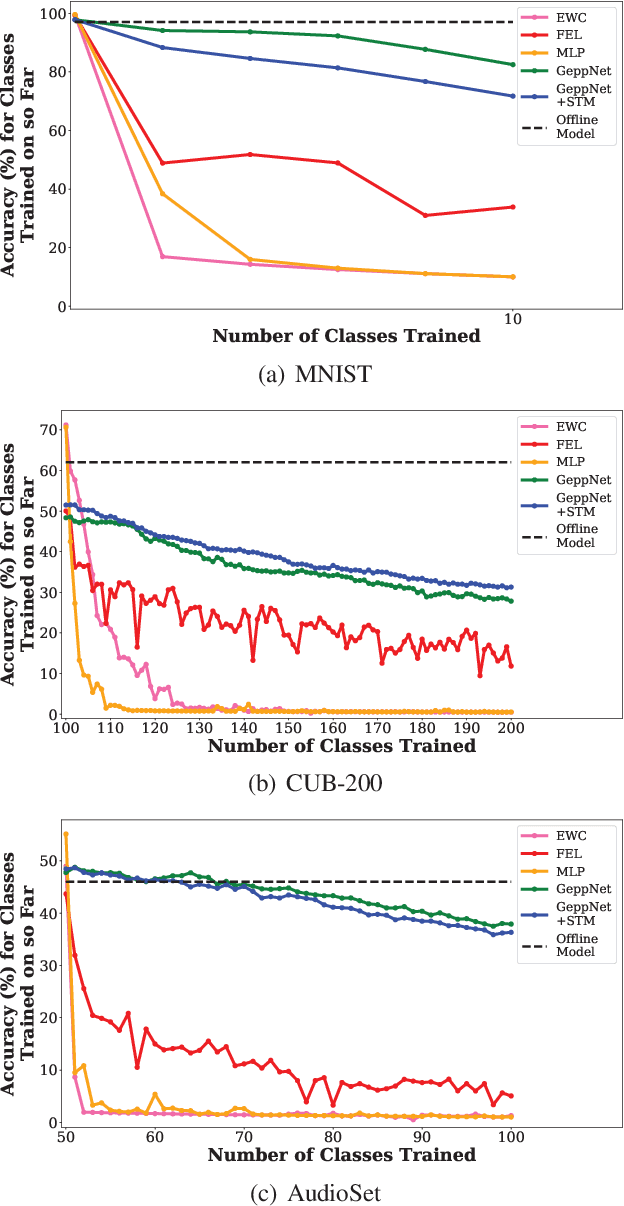Angelina Abitino
Measuring Catastrophic Forgetting in Neural Networks
Nov 09, 2017



Abstract:Deep neural networks are used in many state-of-the-art systems for machine perception. Once a network is trained to do a specific task, e.g., bird classification, it cannot easily be trained to do new tasks, e.g., incrementally learning to recognize additional bird species or learning an entirely different task such as flower recognition. When new tasks are added, typical deep neural networks are prone to catastrophically forgetting previous tasks. Networks that are capable of assimilating new information incrementally, much like how humans form new memories over time, will be more efficient than re-training the model from scratch each time a new task needs to be learned. There have been multiple attempts to develop schemes that mitigate catastrophic forgetting, but these methods have not been directly compared, the tests used to evaluate them vary considerably, and these methods have only been evaluated on small-scale problems (e.g., MNIST). In this paper, we introduce new metrics and benchmarks for directly comparing five different mechanisms designed to mitigate catastrophic forgetting in neural networks: regularization, ensembling, rehearsal, dual-memory, and sparse-coding. Our experiments on real-world images and sounds show that the mechanism(s) that are critical for optimal performance vary based on the incremental training paradigm and type of data being used, but they all demonstrate that the catastrophic forgetting problem has yet to be solved.
 Add to Chrome
Add to Chrome Add to Firefox
Add to Firefox Add to Edge
Add to Edge